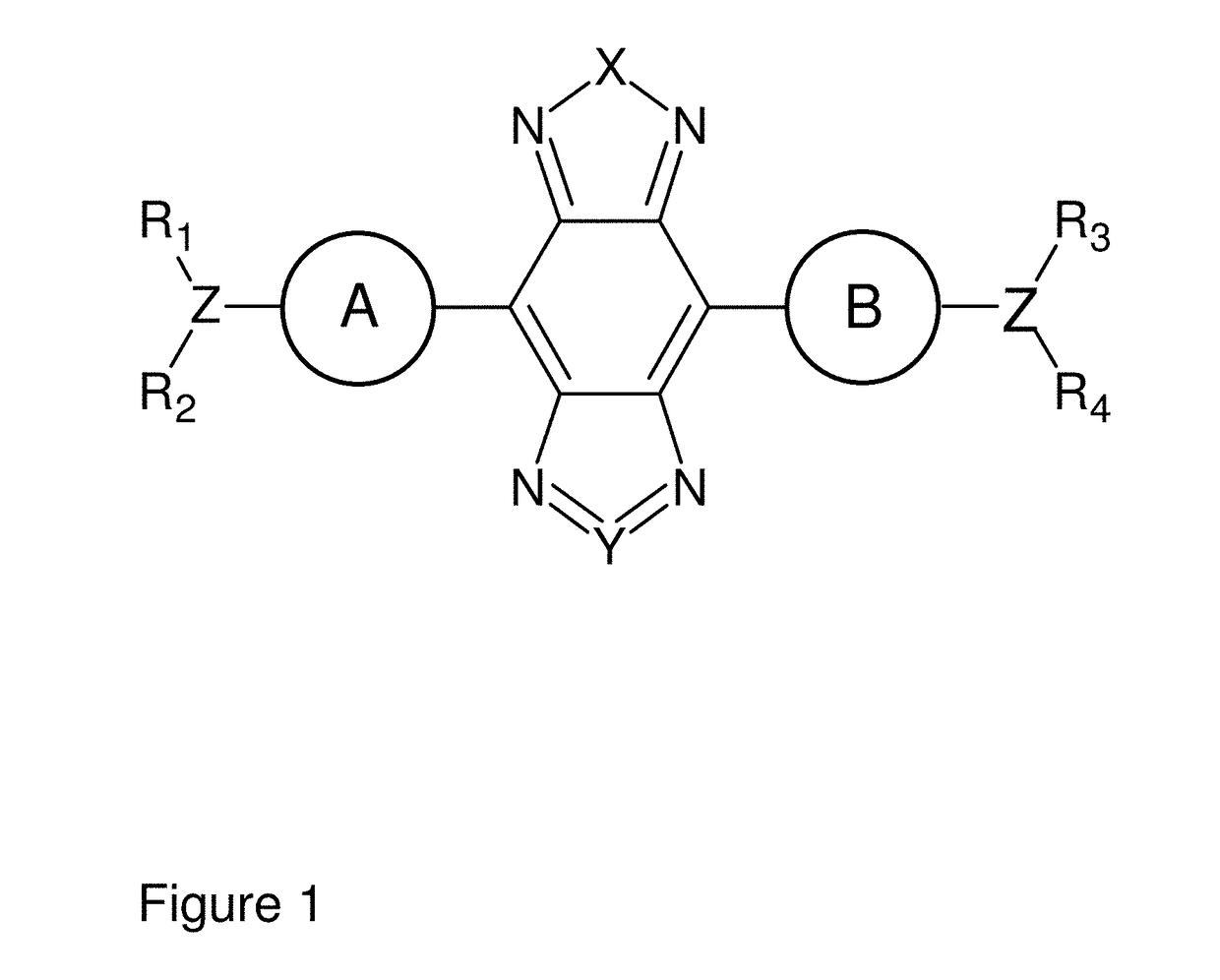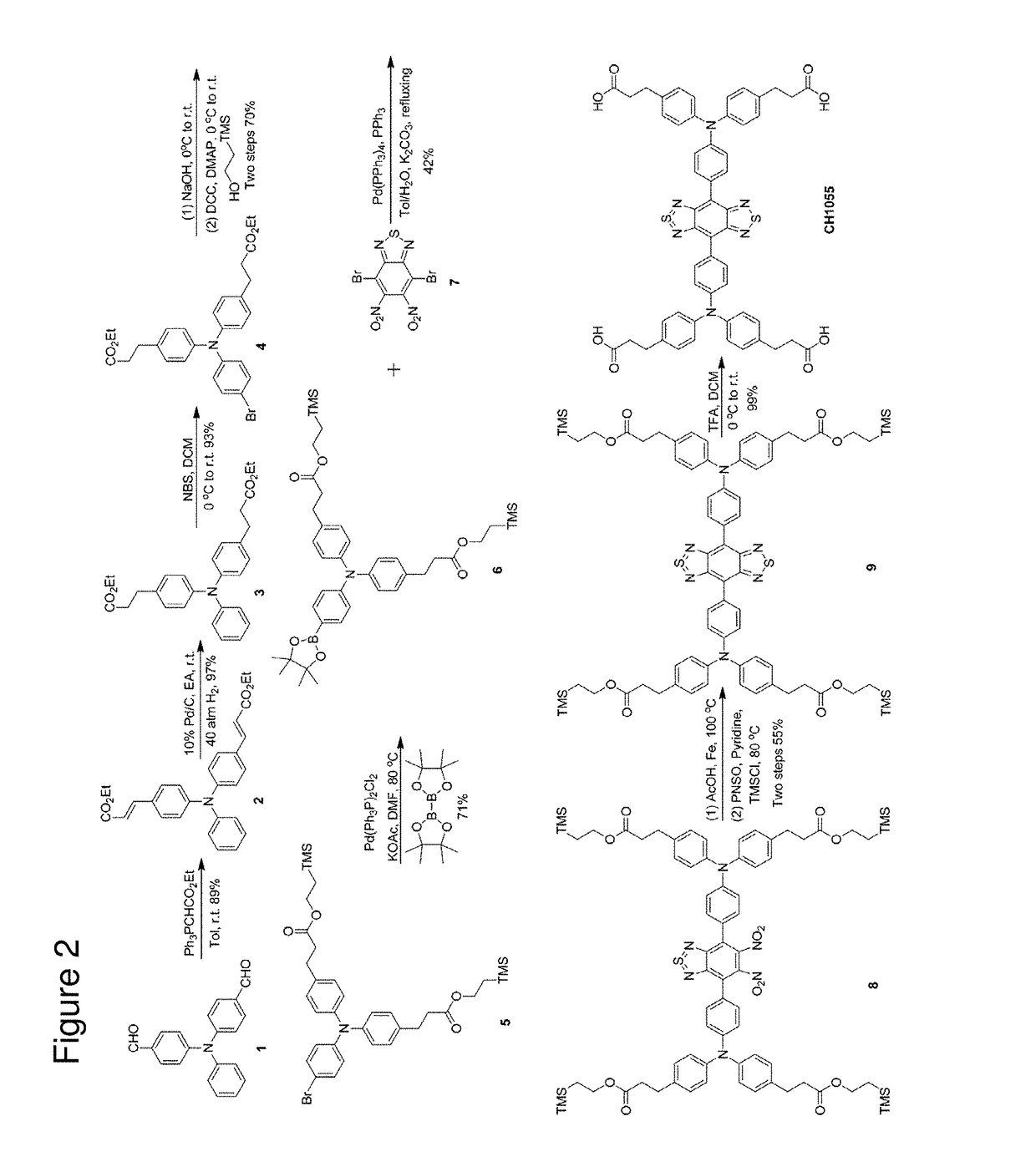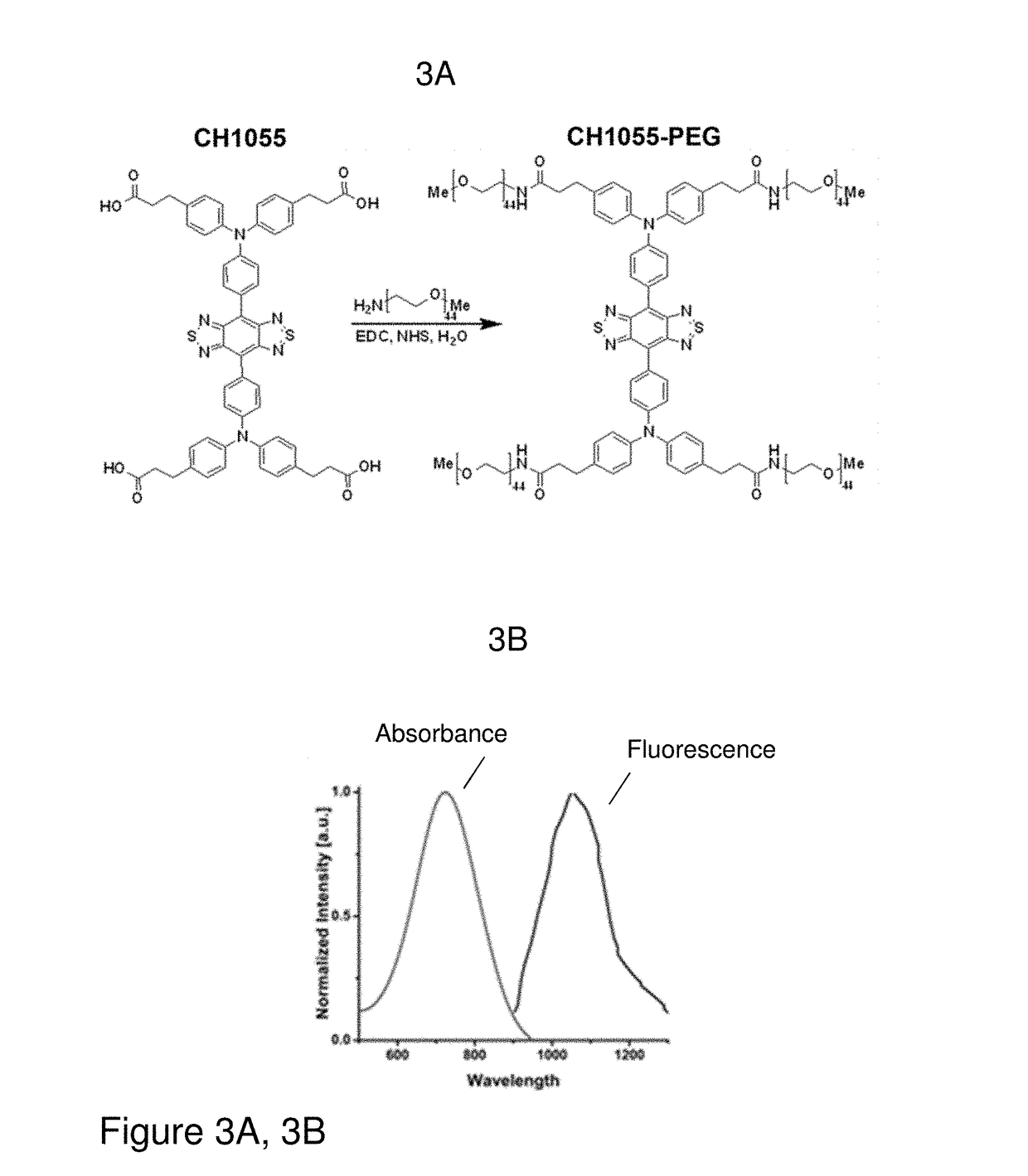Small molecule dye for molecular imaging and photothermal therapy
a small molecule dye and molecular imaging technology, applied in the field of molecular imaging and therapy, can solve the problems of significant increase in the size of the kidneys past the filtration threshold of 40 kd, and achieve the effects of high in vivo biocompatibility, rapid excretion, and high resolution
- Summary
- Abstract
- Description
- Claims
- Application Information
AI Technical Summary
Benefits of technology
Problems solved by technology
Method used
Image
Examples
example 1
of CH1055, CH1055-PEG, CH1055-4 Taurine and CH1055-3 Taurine
[0157]Synthesis of a small-molecule organic NIR-II dye (CH1055, MW 0.97 kDa, FIG. 3A) was achieved with high yield from 4,4′-(phenylazanediyl)dibenzaldehyde. Key steps utilized to assemble the core structure of the target included a cross-Suzuki coupling reaction, iron reduction and N-thionylaniline induced ring closure.(24) Four carboxylic acid groups were introduced into a donor-acceptor-donor (D-A-D) type fluorescent compound to impart a certain aqueous solubility and to allow facile conjugation to targeting ligands. An overview of the synthesis of CH1055 is shown in FIG. 2. The steps in the synthesis of CH1055 were as follows:
1. Synthesis of (2E,2′E)-diethyl 3,3′-((phenylazanediyl)bis(4,1-phenylene))diacrylate(2)
[0158]
[0159]Ethyl (triphenylphosphoranylidene)acetate (26.13 g, 75 mmol) was added to a solution of aldehyde 1 (10.27 g, 34.1 mmol) in anhydrous toluene (100 mL) under an inert atmosphere (N2). The solution was ...
example 2
iodistribution and Long-Term Fate of NIR-II Agents
[0189]Upon intravenous injection of 100 μg of CH1055-PEG in an immunodeficient nude mouse in the supine position, NIR-II video rate imaging was performed. Within a few minutes, very strong fluorescent signal was observed within the bladder and little fluorescence emanated from the liver (FIG. 4A-4D).(5, 10, 19). Background subtracted fluorescent signal intensity of both the liver and bladder regions for CH1055-PEG produced a fluorescence signal that increased significantly with time in the bladder and remained minimal in the liver up to at least 800 seconds after injection. FIG. 4A-4D shows selected time-points from video-rate NIR-II imaging (1200 nm long-pass filter, 100 ms) of a mouse in the supine position after an intravenous injection of CH1055-PEG showing disparate liver and bladder fluorescent signals. For comparison, 200 μL of water solubilized HiPCO single-walled carbon nanotubes (CNTs) were injected (OD˜10 at 808 nm) to gle...
example 3
Kinetics and Assay of Toxicity
[0190]The excretion kinetics was investigated by intravenously injecting 5 balb / c mice with 100 μg of CH1055-PEG and collecting urine, feces, and blood over the course of 24 hours. With a molecular weight of 8.9 kDa and a hydrodynamic radius of ˜3 nm, well below the renal filtration threshold of ˜30-50 kDa, —90% of the imaging agent was excreted through the urine within the first 24 hours post-injection (PI). (27) A CH1055-PEG agglomerated cumulative urine excretion curve for 5 mice (% ID) as well as blood circulation (% ID / g) time-points fit with an exponential decay were obtained during the 24 hours post-injection. It was shown that urine excretion of the material increased over time, and blood circulation decreased proportionately. Excretion profiles from the 5 individual mice used in the excretion study were studied over the course of 24 hours. The collected urine was visibly green due to CH1055 (data not shown). From the urine excretion data we est...
PUM
| Property | Measurement | Unit |
|---|---|---|
| excitation wavelength | aaaaa | aaaaa |
| excitation wavelength | aaaaa | aaaaa |
| wavelength | aaaaa | aaaaa |
Abstract
Description
Claims
Application Information
 Login to View More
Login to View More - R&D
- Intellectual Property
- Life Sciences
- Materials
- Tech Scout
- Unparalleled Data Quality
- Higher Quality Content
- 60% Fewer Hallucinations
Browse by: Latest US Patents, China's latest patents, Technical Efficacy Thesaurus, Application Domain, Technology Topic, Popular Technical Reports.
© 2025 PatSnap. All rights reserved.Legal|Privacy policy|Modern Slavery Act Transparency Statement|Sitemap|About US| Contact US: help@patsnap.com



